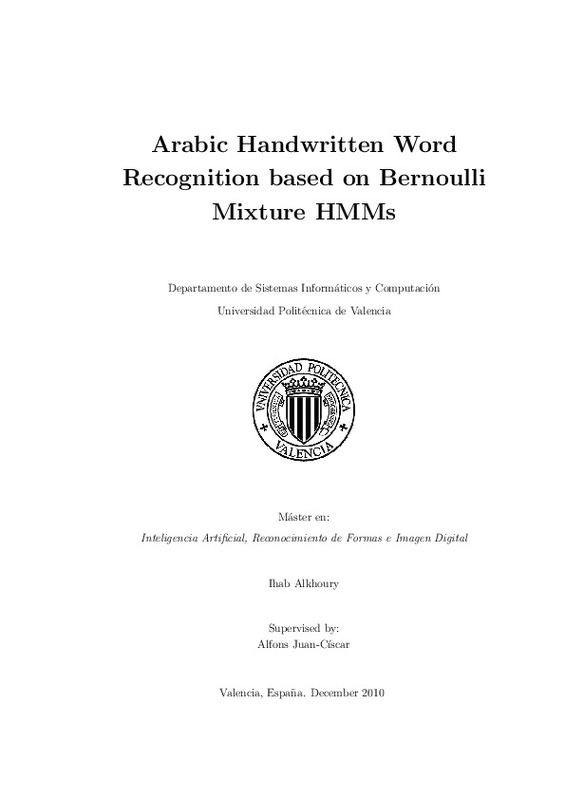JavaScript is disabled for your browser. Some features of this site may not work without it.
Buscar en RiuNet
Listar
Mi cuenta
Estadísticas
Ayuda RiuNet
Admin. UPV
Arabic Handwritten Word Recognition based on Bernoulli Mixture HMMs
Mostrar el registro completo del ítem
Alkhoury, I. (2010). Arabic Handwritten Word Recognition based on Bernoulli Mixture HMMs. http://hdl.handle.net/10251/11478
Por favor, use este identificador para citar o enlazar este ítem: http://hdl.handle.net/10251/11478
Ficheros en el ítem
Metadatos del ítem
| Título: | Arabic Handwritten Word Recognition based on Bernoulli Mixture HMMs | |||
| Autor: | Alkhoury, Ihab | |||
| Director(es): | ||||
| Entidad UPV: |
|
|||
| Fecha acto/lectura: |
|
|||
| Resumen: |
This thesis presents new approaches in off-line Arabic Handwriting Recognition based on
conventional Bernoulli Hidden Markov models. Until now, the off-line handwriting
recognition, in particular, the Arabic handwriting ...[+]
|
|||
| Palabras clave: |
|
|||
| Derechos de uso: | Reserva de todos los derechos | |||
| Editorial: |
|
|||
| Titulación: |
|
|||
| Tipo: |
|







